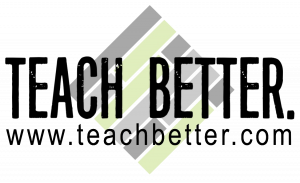In This Post The importance of conversations about our students’ futures. Helping our classrooms become avenues for discovering passion & practical uses for it! Using your content to help students find their futures. Growing up, learning was a struggle. I moved throughout my day feeling as if I was walking through a fog of confusion. While most of my classes … Read More
Differentiate the Learning Not the Assignments
In This Post: Identify how to differentiate learning experiences versus only modifying assignments. See an example of how to differentiate your lesson instead of the materials or activities. Lighten your workload! Modify your instruction for all students to succeed instead of differentiating materials for each unique learner. Many times, we think of Differentiated Instruction (DI) as a method to make … Read More
Swimming Lessons: Diving Into Blended Learning
In this post: Learn what blended learning actually is and why it is so powerful Strategies for blended learning that you can do in 5 minutes, 15 minutes, and half a class Strategies for blended learning that transform your practices as a teacher I teach high school English, and when I heard the words “Blended Learning” for the first time … Read More
3 Ways to Focus on the “Why” Instead of the “What” – Building Deeper Meaning in Learning
In this post: How to move from “What” to “Why” Dive into DoK to deepen the learning Just ask! The power of asking your students “Why” Don’t rob students of the chance to discover and go deeper Ban “What” From Your Classroom Education has long been far too focused on the acquisition of information and learning how to follow algorithms … Read More
9 Ways to Fix Your Lesson Plans : Differentiation
Differentiation is a powerful way to fix your lesson plans. What is differentiation in education? Differentiation simply means tailoring your instruction to meet the individual needs of all your students. A simple definition, but a potentially difficult challenge! Especially when you have 30 students needing 30 different things for each activity – Yikes! But providing differentiated tools can be incredibly … Read More





